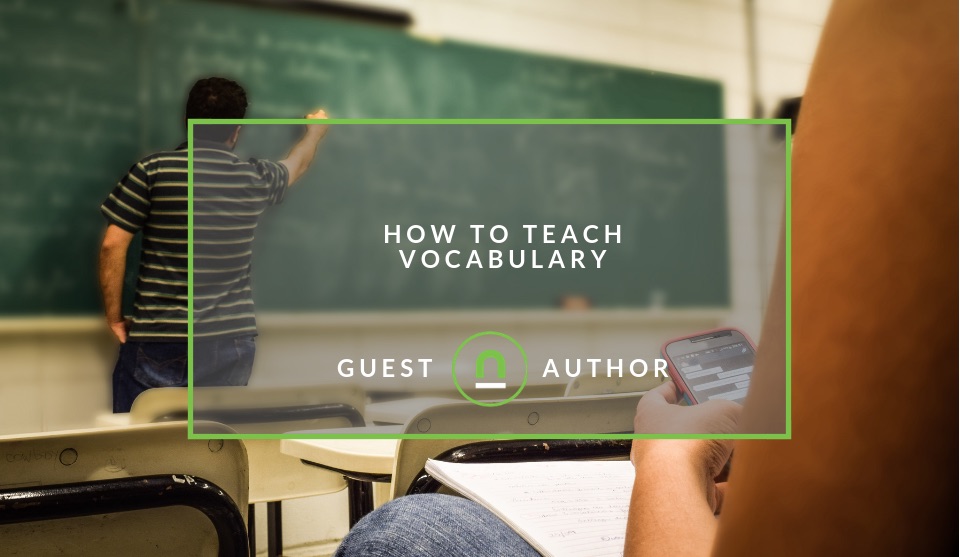Recent posts

Doctors Orders
The Difference Between SOAP Notes and DAP Notes
02 December 2025

Petrol heads
Why Load Bin Accessories Make Your Bakkie So Much Easier to Live With
26 November 2025

Alarming
What Is The Part Time Job WhatsApp Scam?
25 November 2025

Doctors Orders
How Data Has Changed The Healthcare Sector
24 November 2025
Popular posts
Extravaganza
Trending Music Hashtags To Get Your Posts Noticed
24 August 2018
Geek Chic
How To Fix iPhone/iPad Only Charging In Certain Positions
05 July 2020
Extravaganza
Trending Wedding Hashtags To Get Your Posts Noticed
18 September 2018
Money Talks
How To Find Coupons & Vouchers Online In South Africa
28 March 2019
How To Teach Vocabulary
02 August 2019 | 0 comments | Posted by Barbara Busch in Academia
Appealing youthful brains are most successful when education is fun. Initiating new notions through fresh techniques represents and maintains concentration. Different activities used for teaching vocabulary can be a lot enjoyable for learners. There is a long journey with young ones to follow in future, and for that, they need to retain their knowledge of vocabulary that they learn.
There are four stages involved in obtaining new words.
Four stages of vocabulary training
- The first stage is that the learner is going to notice the word with the help of the instructor. That is an observation will be done by the brain of the language learner that something new has been introduced.
- The second stage that comes up is that student would start to be familiar with the word. Now the instructor would help a student out to start recognising the word.
- The third stage is when learner would start to recognise the word on his own. This is when they would be able to analyse the word themselves and develop a better understanding of it.
- The fourth and last stage is when the learner would not only be capable of recognising the word would also start to use and reproduce it in his conversation and use of language. This is the stage where there is a successful transmission completed by the instructor to students towards learning a new word.
Making it interesting
One thing that is very important for getting better results during teaching vocabulary is that learners should remain motivated. Vocabulary generally becomes boring for students as its difficult to bring in innovations, but it should be taught in an interesting way as possible like other subjects. Different types of exercises, activities and strategies could be used according to the different stages of vocabulary learning.
Tips for the first stage
As the first stage is to get the word notified to the learner so it is more of a visual involvement stage so, flashcards and pictures could work best for it.
Now, this can be done by either showing just a word or by putting on a flashcard that has highlighted word meant to learn used in a sentence.
Tips for the second stage
Now as the second stage is of recognising the word by the learner, so for this stage, numerous activities could be planned by the instructor. These activities could be like true/false given about the targeted word.
Classify the words harmonising. (This activity if used can provide with a huge variety of categories of exercises used) Matching the word to its description, antonyms, adjectives and nouns, verbs and adverbs, word to the image, matching two words that go jointly, multiple choices or even drawing the word would work as anything.
Circle the word you listen to is also a productive activity, especially for students at younger ages.
Tips for the third stage
This is the stage of reproducing the word. Fourth stage and third stage as are almost similar to each other in practice so you can use the same activities on both stages. At this stage, dictations would work as now the learner has been introduced well with the word and moved ahead of recognising stage also.
You can also carry out a question-answer session with the limitation to use the word once at least in both questionings and answering so students would be well aware with the use of the word.
Picture descriptions can also be done to use the particular targeted words while explaining any of the pictures so that learners may learn more extensive use of the word in different ways.
Imitating and miming the word would also be an interesting and thrilling activity for students. They would become active while trying to depict each word that they learnt through expressions and actions without pronouncing it.
The basic strategy for all activates
The basic strategy needed to be followed while planning and practising any activity and while delivering to students that it should be creative and motivating. It should be interesting and as communicative as possible. This would not let the learners lose their interest in learning more.
Considerations for a teacher
There are a few things needed to be considered by the teacher while planning to make learners learn new words. First is that the teacher should decide herself first that in one lesson or topic how many new words should be introduced. According to studies and researches, five to seven words are perfect if introduced.
There is no need to go for each drill and activity given in the lesson. This may stretch the time for teaching long and may make students feel bored. The selection of activity should depend over as to how valuable the activity is, is their capability in exercise to make students understand more about language or is there any way to make the exercise more interesting. Give more time to listening and speaking; this would develop your learners’ skills more. Let them work in pairs or small group, so they learn more and more while conversing.
Here were some very authentic and practised advises for all the instructors who are into making young English language learners learn more about language. Use these and become successful. See the rate of learning of your students increase.
Good Luck!!!
About the author
Barbara Busch is a master of English Language with nine years' experience working for buy essay club in screening, editing and writing articles across multiple disciplines, at all levels of business. She likes travelling and relaxing at home.Tell us your story
Would you like to write for nichemarket just like Betty has? Find out how to submit a guest post and when you're ready, you can contact us.
Are you looking to promote your business?
South African educational businesses can create your free business listing on nichemarket. The more information you provide about your business, the easier it will be for your customers to find you online.
Registering with nichemarket is easy; all you will need to do is head over to our sign up form and follow the instructions. If you require a more detailed guide on how to create your profile or your listing, then we highly recommend you check out the following articles.
Recommended reading
If you enjoyed this post and have time to spare why not check out these related posts and dive deeper down the rabbit hole that is education.
- 10 Sites That Teach Coding For Free Online
- Trending Hashtags For Teachers & Lecturers
- What Is The International Day of Education?
- How To Get An MBA Online In South Africa
Tags: Language , Teaching, Guest Post
You might also like
Maximising Business and Trading Opportunities Through Smart Online Strategies
07 November 2025
Posted by Marcus Nord in Money Talks
This article aims to outline for entrepreneurs, SMEs, and individual traders how better outcomes might be achieved through well-designed online strat...
Read moreThe Difference Between SOAP Notes and DAP Notes
02 December 2025
Posted by Che Kohler in Doctors Orders
A look at SOAP format, which remains the classic choice for healthcare professionals, while DAP notes offer more flexibility for mental health docume...
Read more{{comment.sUserName}}
{{comment.iDayLastEdit}} day ago
{{comment.iDayLastEdit}} days ago
 {{blogcategory.sCategoryName}}
{{blogcategory.sCategoryName}}

